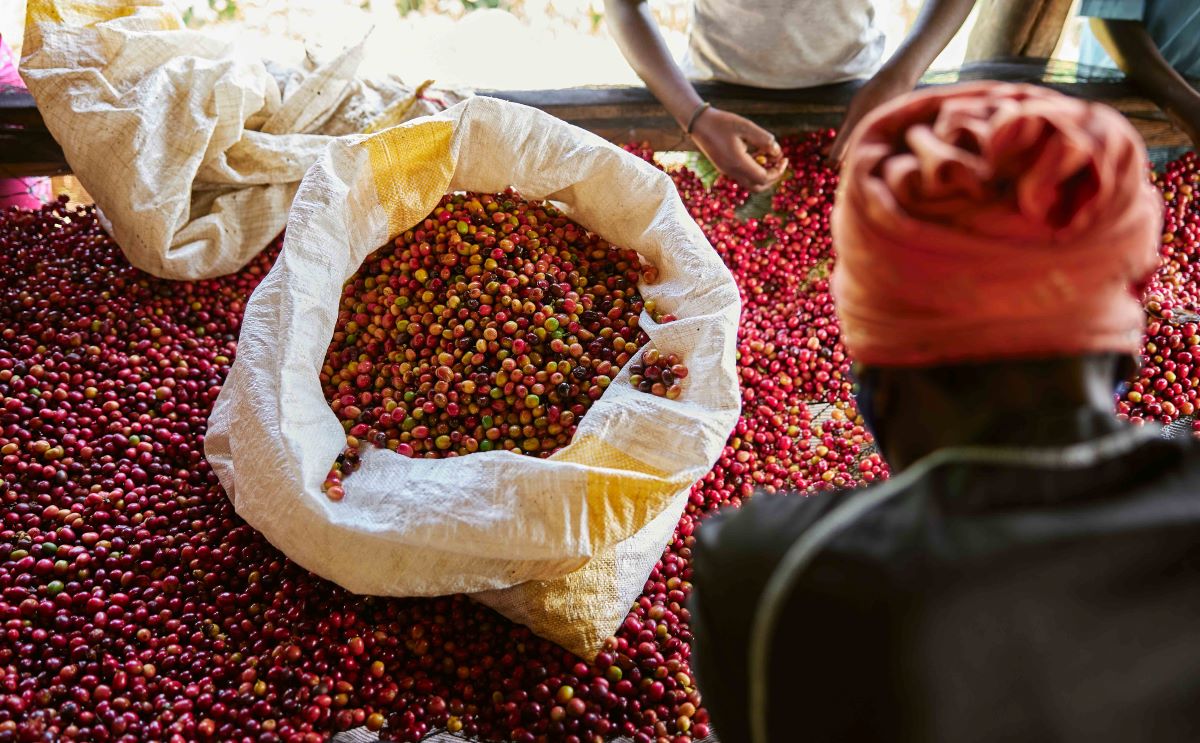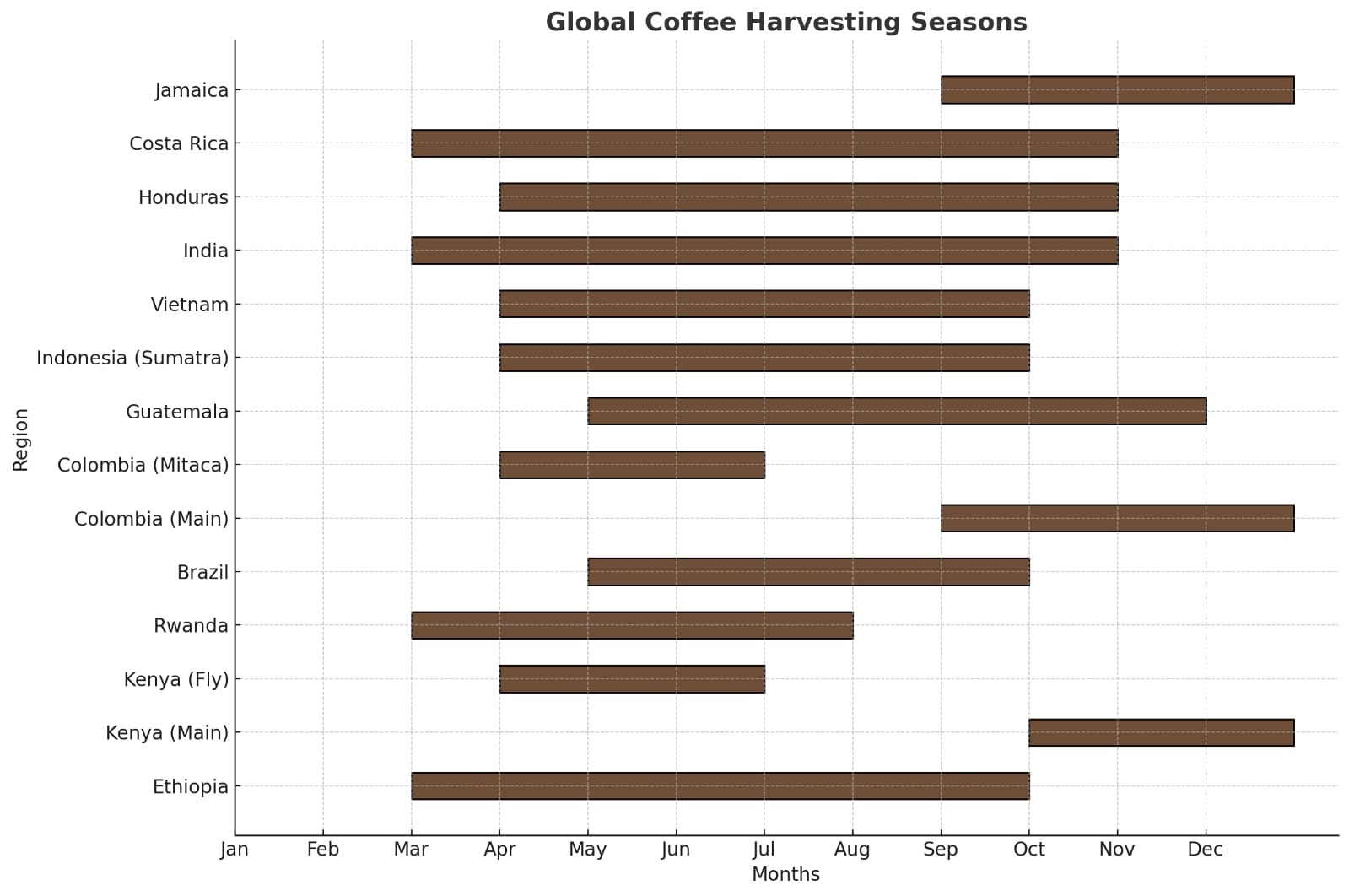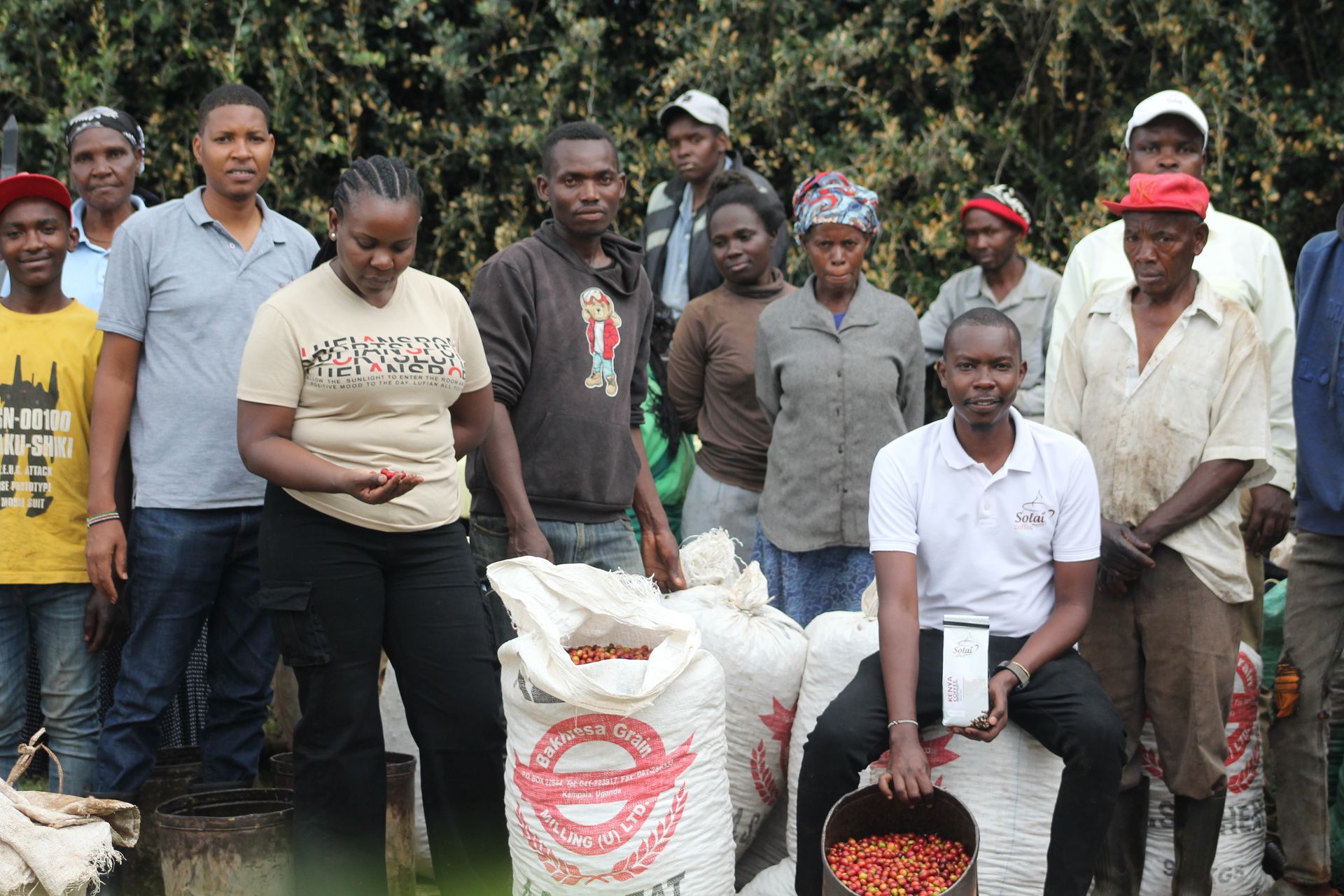The journey from tree to cup is time-consuming, and one step is crucial for the coffee production chain to reach our cups: picking ripe coffee cherries from coffee plants. This process is influenced by factors such as geography, climate, and the species of coffee plant—primarily Arabica (Coffea arabica) and Robusta (Coffea canephora).
 Coffee farmers sorting freshly harvested ripe cherries, carefully separating the fully ripened ones from the semi-ripe cherries. The process emphasizes their commitment to ensuring the highest quality coffee production.
Coffee farmers sorting freshly harvested ripe cherries, carefully separating the fully ripened ones from the semi-ripe cherries. The process emphasizes their commitment to ensuring the highest quality coffee production.
Coffee Harvesting Seasons Matter to Consumers
For coffee lovers, understanding harvesting seasons offers a deeper appreciation of their favorite brew. It allows them to identify seasonal offerings and limited-edition beans, support farmers by choosing ethically sourced coffee, and enhance their coffee-drinking experience by gaining insight into the journey from farm to cup.
Read also: Specialty Coffee: From bean to Cup
Enjoy Kenyan coffee straight from the farm to your cup. Order now and support small-scale farmers!
Global Coffee Harvesting Seasons
Here's a snapshot of harvesting periods in major coffee-producing regions:
Central America & Caribbean: High-Quality Arabica
- Honduras (November–March): Balanced sweetness and bright acidity.
- Costa Rica (November–February): Eco-friendly coffee with citrus and tropical notes.
- Jamaica (September–December): Luxurious Blue Mountain coffee, mild and smooth.
Asia-Pacific: Diverse Varieties
- Indonesia (Varies by Island, October–March for Sumatra): Famous for earthy, spicy flavors.
- Vietnam (October–March): Largest Robusta producer, offering robust and bold coffee.
- India (November–February): Produces coffee with low acidity and subtle spice notes.
Latin America: World's Largest Producer
- Brazil (May–September): Mechanically harvested beans with nutty, chocolatey flavors.
- Colombia (Main: September–December; Mitaca: April–June): Renowned for smooth, balanced coffee.
- Guatemala (December–April): Full-bodied coffee with hints of cocoa.
Africa: Birthplace of Coffee
- Ethiopia (October–February): Hand-picked beans known for fruity and floral flavors.
- Kenya (Main: October–December; Fly Crop: April–June): Acclaimed for bright acidity and bold profiles.
- Rwanda (March–July): Produces coffee with a silky body and citrus notes.
 Here's a bar chart showing the global coffee harvesting seasons, highlighting the harvesting periods for major coffee-producing regions. Each bar represents the months during which harvesting occurs.
Here's a bar chart showing the global coffee harvesting seasons, highlighting the harvesting periods for major coffee-producing regions. Each bar represents the months during which harvesting occurs.
Key Factors Influencing Coffee Harvesting Seasons
- Climate and Altitude: Coffee thrives within the Bean Belt between the Tropics of Cancer and Capricorn. Variations in altitude and climate influence ripening and harvesting schedules.
- Coffee Species: Arabica takes longer to mature than Robusta, impacting their respective harvesting timelines.
- Farming Practices: Hand-picking cherries ensures higher quality but is labor-intensive and time-consuming compared to mechanical harvesting.
Coffee Harvesting Seasons in Kenya
Kenya has two main harvest seasons due to its unique geographical position, straddling the equator.
- Main Harvest Season (October to December): The peak harvesting period is when cherries ripen under optimal conditions, contributing over 70% of Kenya's total coffee output.
- Fly Crop Season (April to June): A secondary harvest with smaller yields but equally high-quality beans.
Related blog post: Coffee Harvesting Process In kenya

A visual table displaying Kenya’s coffee production throughout the year
Boots on the Ground
At Solai Coffee, the harvest season is a time of celebration, collaboration, and giving back.
Each year, we actively engage with farmers and communities through initiatives such as:
- Farmer Training Programs: Conduct boots-on-the-ground tours to educate farmers on best practices for harvesting and processing coffee to ensure top-notch quality.
- Community Events: Host a donation drive to support community schools with essential learning materials and food programs.
- Consumer Engagement: Offering coffee enthusiasts the opportunity to participate in farm tours, connecting them with the journey from tree to cup while deepening their appreciation for Kenyan coffee.

Coffee harvesting seasons define the quality of coffee and farmers' livelihoods.
Supporting farm-direct beans like Solai Coffee ensures you savor the finest flavors while empowering communities and promoting sustainability.
Coffee Harvesting Seasons